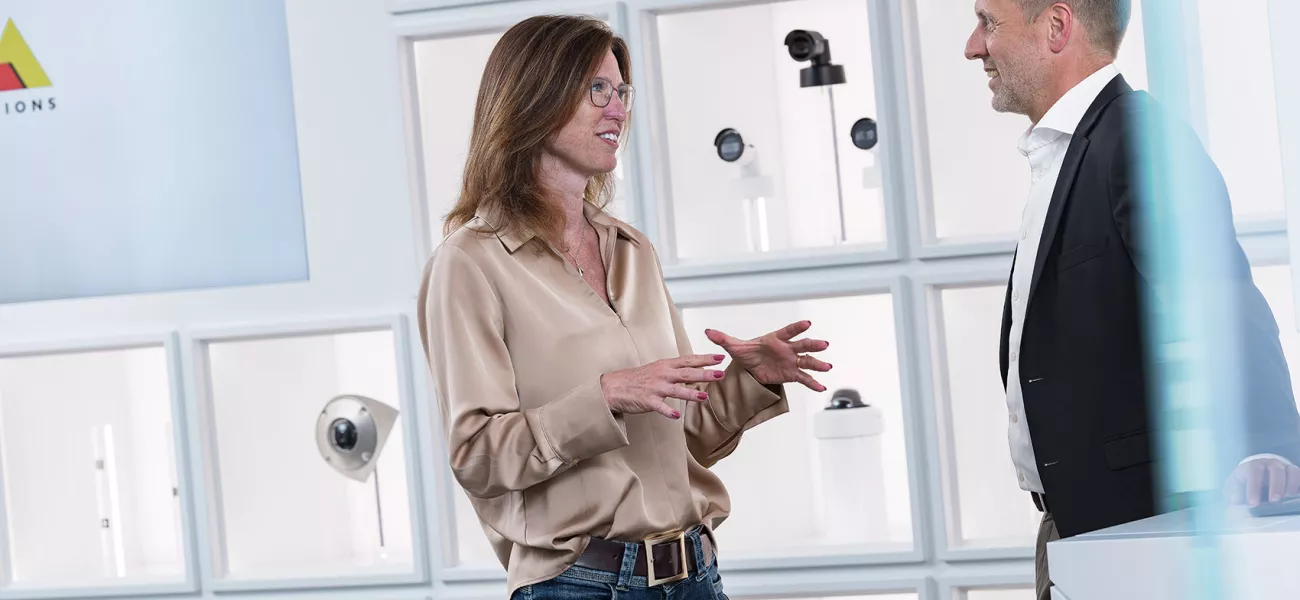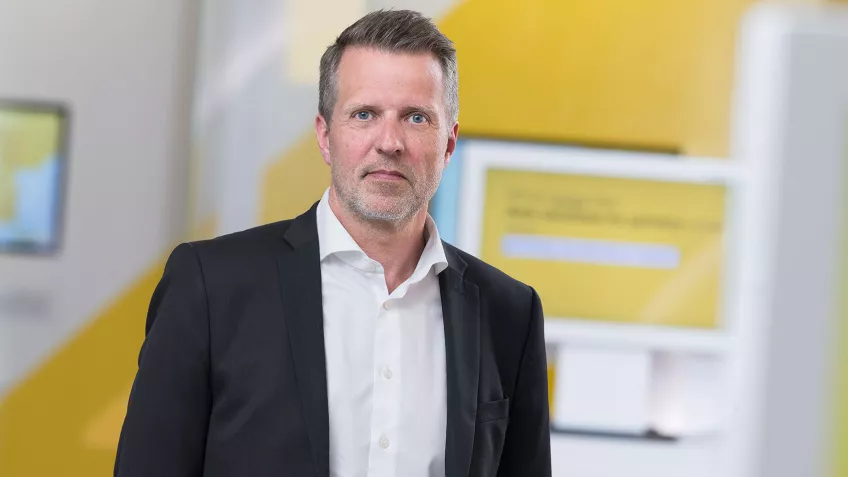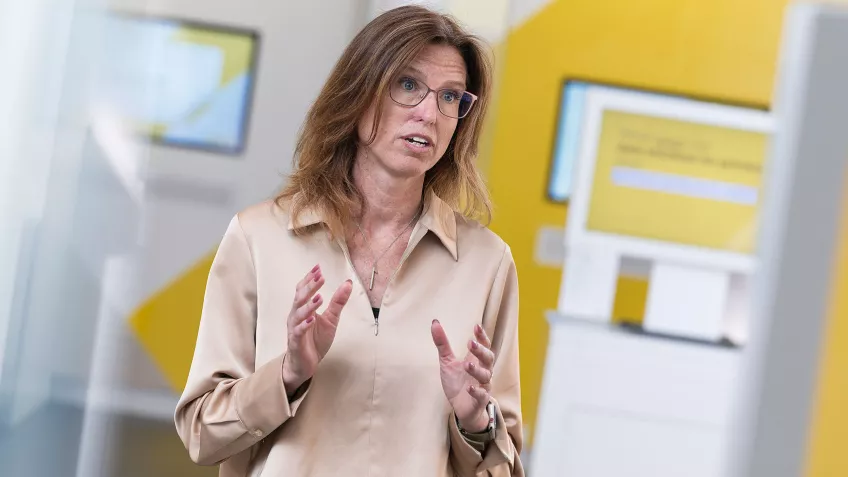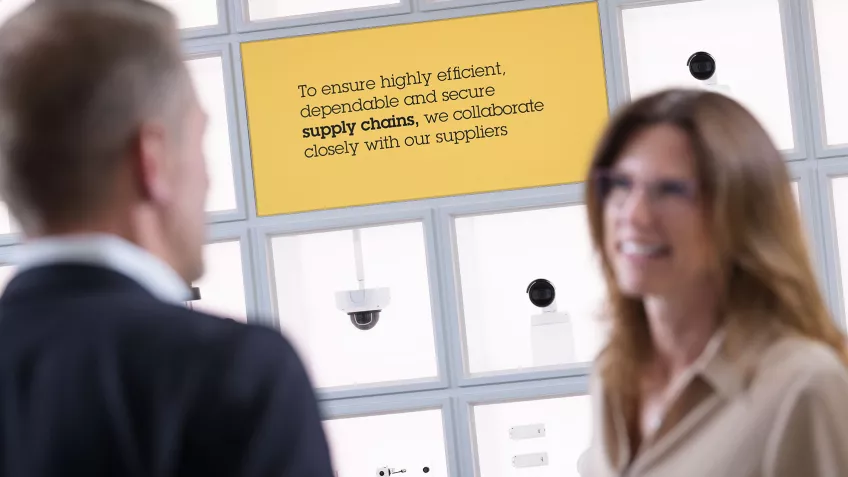
It is impossible to escape the fact that the various global uncertainties of recent years have had a major impact on the way businesses have been able to operate. One of the areas hit hardest has been global supply chains. To talk about the challenges faced, how we met them, and the lessons learned, we spoke with Jeanette Skjelmose, Vice President Operations and Peter Lindström, Executive Vice President Sales.
A smooth-running and effective supply chain requires a number of considerations to align seamlessly and consistently. Recent natural disasters, geopolitical tensions and continuing issues pertaining to the pandemic have all impacted the continuity the supply chain needs. This, in turn, has affected the ability to ensure components and products get where they are needed, when they are needed. These delivery concerns have also been brought about by the global locations of our suppliers, with each country having their own restrictions, regulations or sanctions to follow.
These issues have been amplified by shortages of vital raw materials, such as those needed for semiconductors. These are the foundation for every piece of technology, from mobile phones to network cameras.
“We have, like many others, struggled with challenges that meant we were not able to provide the service to the standard we expect. Despite the challenges we faced, it was extremely important to us to maintain the highest standards of quality that Axis stands for,” says Peter Lindström.

Multiple suppliers for component sourcing
The nature of the geopolitical landscape has shifted dramatically recently, bringing with it an impact on the way companies can operate across borders. This has highlighted the need for us to use multiple suppliers to source components.
Dual or secondary sourcing means using more than a single supplier to source the components needed for a product. Where that isn’t possible, we will ensure that either it or the supplier carries a buffer stock to secure supply can be maintained even if the chain is being disrupted. In the case of particularly critical components, we will often hold a stock which can support manufacturing for 9-12 months ahead. This not only protects supply in the case of any disruptions, but also in the case of sudden spikes in industry or customer demand.
One strong benefit of our relationship with our partners is that through dual sourcing and maintaining buffer stocks, we can arrange for suppliers with a surplus of specific components to support those with a shortage. In this way, supply chain continuity can be maintained across regions.
Improving from our learnings
Despite our solid standing in the market and our strong relationship with those across our supply and value chains, we recognize that there are key areas for improvement. These learnings have been important in helping us structure and shape the processes and tools we have put in place to ensure that when future challenges arise, as we know they will, we are in a better position to avoid major disruptions.
Peter says: “One thing we have always placed a strong emphasis on is to act on our learnings. We tackle the issues, look at the learnings and convert them into actions to ensure we are in a much stronger position in the future.”

Jeanette Skjelmose expands on this: “It has been the challenges of recent years, and the learnings we gained from them, that have led us to invest more thought into the 3 R’s – Resiliency, Robustness and Responsibility. Resiliency is the shield to protect us against difficult times. Robustness is about us and our partners being quick to react should something break through. Responsibility is how we ensure we always have the highest quality, that we work sustainably and that we always work to ensure you can trust us to keep our promises.”
Collaboration with partners key to success
One area that we always looked to maintain and improve, regardless of global affairs, has been the close collaboration with our partners. One key takeaway from recent years, however, has been the need for more open and transparent channels of dialogue across that chain. We have always looked to involve and include our partners in discussions when it comes to production, sourcing, and manufacturing, but, as Jeanette explains “What these experiences have taught us is the need to take a much more visible and transparent approach when it comes to discussions with our manufacturers. This has opened new avenues for improvement, such as in forecasting. By giving our manufacturers more predictability and a more proactive role in our planning, they are better placed to be able to help us.”

Peter agrees “If these experiences have taught us anything it’s the greater need for predictability. The better placed we are to know things, the better we can relay that to our suppliers and channel partners, the better placed they are in relation to what needs to be done and by when. This is the new normal in terms of service levels.”
These discussions have led to upgrades and investments to smarter support systems and better strategic forecast planning for the future, which when coupled with a more proactive approach to communication with suppliers and manufacturers, are further ways in which we have put into action our recent learned experiences.
Strong and improving
We are a growth organization, and as such we recognize the need to consistently evolve and seek improvement. The decisions we have made over the last couple of years have gone a long way in showing that we are an organization who learn from difficult challenges and can be trusted to deliver. We continually look for new ways to strengthen our relationships with those across the whole supply chain, to help nurture the spirit of close collaboration and partnership.
Peter says “We are consistently striving for improvements to ensure stronger resiliency for the future. This is to better reflect the reality of the world we are in now, which should allow us a greater predictability with the promises we make. This is all done to ensure our partners and customers can come away with a better experience of Axis.”